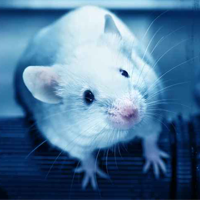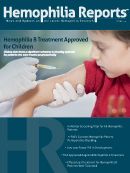Publication
Article
Hemophilia Reports
Hemophilia Cured in Mice Models Using New Genome Editing Method
Author(s):
Stanford researchers were able to cure hemophilia in mice models using a new genome editing method. Their findings were published in Nature.

Stanford researchers were able to cure hemophilia in mice models using a new genome editing method. Their findings were published in Nature.
A safer genome editing method might cure hemophilia in mice, according to research published in the journal Nature.
Researchers from Stanford University School of Medicine developed a genome editing technique that they believe is more efficient than the current method, clustered regularly insterspaced short palindomic regions (CRISPR/Cas9), because it does not require the co-delivery of endonuclease to clip the recipient’s DNA at specific locations. The authors point out their method does not rely on the co-insertion of promoters to activate the gene’s new expression. This new method is safer and lasts longer, according to the researchers, and it was able to cure hemophilic mice by inserting a clotting factor gene. The investigators inserted the clotting factor into about 1 percent of liver cells in the mice, but those cells created enough of the clotting factor to cure the disorder.
“It appears that we may be able to achieve lifelong expression of the inserted gene, which is particularly important when treating genetic diseases like hemophilia and severe combined immunodeficiency,” senior author Mark Kay, MD, PhD, said in a press release. “We’re able to do this without using promoters or nucleases, which significantly reduces the chances of cancers that can result if the new gene inserts itself at random places in the genome.”
The current method, CRISPR/Cas9, employs a bacteria’s own function to identify and attack foreign cells. It saves a portion of the foreign cell’s DNA in its own genome so it is able to identify new foreign cells in the future. The saved portions are called Cas9, and are later attached to matching cells.
“The use of nucleases and promoters may have significant adverse effects,” lead author Adi Barzel, PhD, continued in the statement. “I wanted to come up with a novel gene-targeting scheme that involved no vector-borne promoter and did not require the use of an endonuclease.”
The new method does not use the nucleases to cut the DNA or a promoter to drive expression of the clotting factor gene, but instead attaches the new gene expression to albumin found in the liver. Albumin makes its eponymous protein which regulates the blood volume to allow molecules to be transported through the blood. To ensure albumin created the clotting factor protein, the scientists used adeno-associated virus (AAV). The AAV was utilized to insert the homologous recombination gene near the albumin gene. AAV was an effective therapy in mice, where it lasts longer; in humans, the virus only lasts a few months, according to a 2006 study.
The newborn hemophilic mice expressed clotting factor levels between 7-20 percent of normal levels after the intervention, which has been previously shown to be therapeutic in mice. In adult mice, where the gene was inserted in about 1 percent of liver cells, the therapy also worked well, the researchers commented.
“We expected this approach to work best in newborn animals because the liver is still growing,” Kay explained. “However, because homologous recombination has been thought to occur mostly in proliferating cells, we didn’t expect it to work as well as it did in adult animals.”
In the future, the researchers aim to test the technique in mice whose livers are made up of a combination of human and mice cells.






